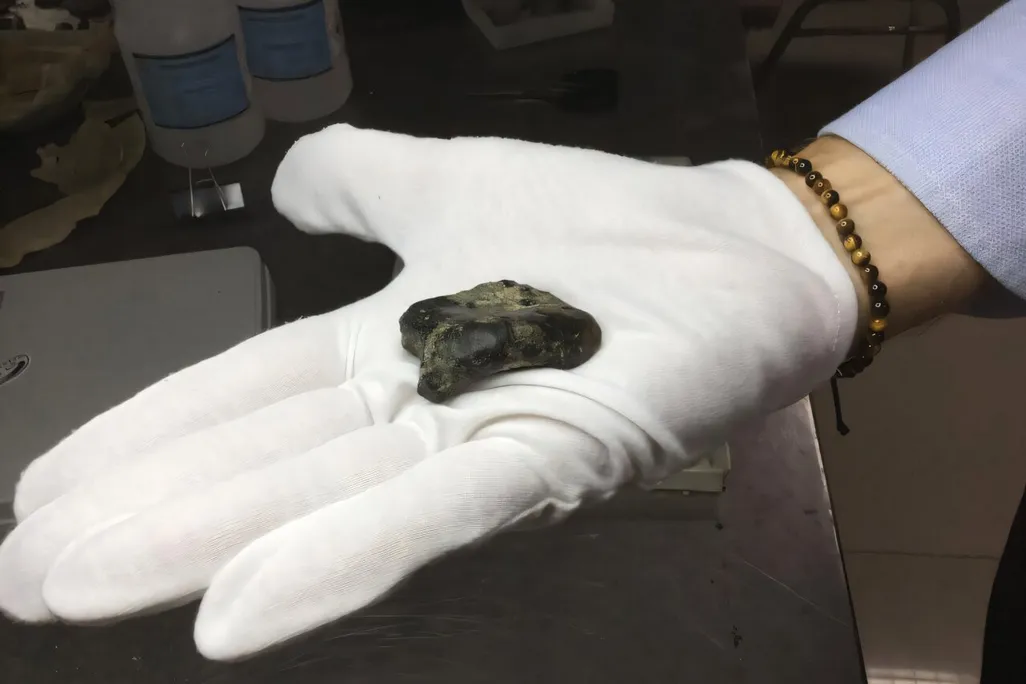
More than 6,000 animal fossils were found in Indonesia, and two of them belong to Homo erectus

Researchers found small Homo erectus fossils among other animal remains.
H. Berghuis
Dredging operations off the coast of Java, Indonesia, unearthed a treasure trove of thousands of animal fossils, including those of a previously unknown Homo erectus population.
A team of scientists teamed up to date and identify the collection of more than 6,000 fossils, placing them between 131,000 and 146,000 years ago. Among them were komodo dragons, elephants, hippos, river sharks and more. Researchers also identified two tiny fragments of hominid skull as belonging to H. erectus, an ancient human ancestor.
The fossils are the first ever submerged Homo erectus remains to have been discovered by scientists in this region. The discoveries were described in four studies in the journal Quaternary Environments and Human in June.
Harold Berghuis, a geologist at Leiden University in the Netherlands, was not surprised that the seafloor was home to the fossils. “I knew beforehand there might be fossil material,” Berghuis tells Michael Marshall at Science News. The submerged area called the Madura Strait was once part of a landmass called Sundaland, which connected the Indonesian archipelago to mainland Asia.
While Berghuis dreamt of finding hominin remains, he tells Patrick Pester at Live Science that it wasn’t until his last day of collecting fossils that he finally spotted one. “It was already getting dark and I sat down to enjoy [the] sunset,” Berghuis says. “And then, right beside me, lay this fossil that reminded me so much of the only Dutch Neanderthal. This is a well-known fossil in my country, dredged from the North Sea.”
Berghuis took the fossil back to his hotel room, and compared it to images of the Dutch Neanderthal, reports Live Science. He determined that the fossil was similar to that of ancient humans. Later analysis revealed that the fossil likely belonged to an adult or adolescent H. erectus, while the other fossil found in the search had not reached adulthood.
The fossils reveal interesting facts about Homo erectus. Scientists knew that H. erectus lived on the nearby island of Java. The new research suggests that Homo erectus dispersed along the major rivers of Sundaland, which would have provided them with plenty of water, fruits, edible plants and shellfish. The scientists also found cuts on the bones of turtles, as well as broken bones from cow-like bovines, which, explains Berghuis in a statement, “point to hunting and consumption of bone marrow.”
Interestingly, hunting strong bovids is a common trait in more modern human species from mainland Asia, but is not one that’s been found in H. erectus populations in Java. The Madura Strait hominins may have developed this hunting strategy on their own, explains Berghuis in a statement. Or, there could have been some kind of contact and exchange between these populations.
The researchers found more than 6,000 fossils from 36 vertebrate species. Quaternary Environments and Humans/https://tf-cmsv2-smithsonianmag-media.s3.amazonaws.com/filer_public/45/60/4560e4dd-99de-4483-b09f-fe4b58189335/d1180x428.png)
Plenty of other unknowns also remain. The scientists have not determined how the H. erectus they found died. And researchers believe there are more mysteries about human evolution waiting to be found in the region. “It was also the stepping-off point for human movement into Australia and New Guinea,” Geoff Bailey, an archeologist at the University of York who was not involved in the work, says to Science News. “This is a place where we ought to be focusing this sort of underwater investigation.”
The animal remains are important to our understanding of the area, too. Many of the species found by the researchers are now extinct, but the findings show that there was once a time when these animals were all thriving in the region. “This knowledge is hugely important to our understanding of the biodiversity of the whole of Southeast Asia,” Berghuis says in a statement.

/https://tf-cmsv2-smithsonianmag-media.s3.amazonaws.com/accounts/headshot/Sara_-_Headshot_thumbnail.png)






